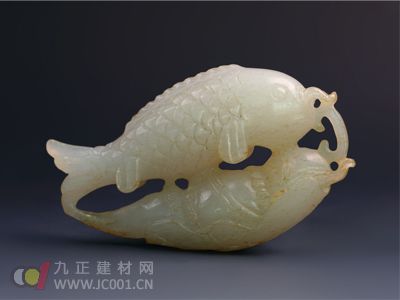1. In ancient times, a variety of jade materials were commonly used, such as white jade, sapphire, topaz, jasper, and nephrite. Today, many new stone and mineral materials are being used in counterfeit items, including fake yellow topaz made with Huang Qiyan. To identify authentic pieces, it's crucial to distinguish between genuine jade materials and understand the differences between old and new versions of the same material.
2. It is essential to understand the basic structural properties of different types of jade, such as hardness, density, non-uniformity, and permeability. Once these characteristics are known, one can analyze how long an ancient piece has been buried, the effects of environmental conditions on the jade, oxidative corrosion, and its evolutionary changes over time. Fake products often rely only on surface effects that do not follow natural oxidation patterns, making them fundamentally different from real artifacts.
3. Authentic jade undergoes aging and wear, which can be mimicked using modern materials or old residues. However, when new processes are applied, the resulting surfaces may show color inconsistencies or damage the original oxide layer, revealing the artificial nature of the piece.
4. The type of material alone cannot be used to determine authenticity, as the same material has been used for thousands of years. During identification, it's important to rely on specific evidence rather than just the material itself. If the material does not clearly indicate a difference, Other aspects should be examined to find more conclusive proof of authenticity.

5. Some low-quality, inexpensive jade materials are now being used for counterfeiting. These are artificially treated to create thick layers of oxidation, which tend to flake off easily and lack the natural texture of real ancient jade. Such materials were never used in historical periods and are purely modern imitations.
6. Understanding the artistic styles and techniques of past eras is vital in identifying authentic jade. While some fakes can be detected through design and structure, high-quality imitations are harder to spot. In such cases, additional clues must be sought beyond style, as folk-style jade is too varied to be judged solely by form.
7. Ancient jade art showcases the perfect blend of craftsmanship and aesthetics. However, some pieces have noticeable flaws—either due to limitations in technology or poor design choices. These imperfections help distinguish real from fake.
8. The level of mechanization affects product quality and standards. Over time, tools and techniques have evolved, leading to distinct process methods in different eras. By understanding these differences, we can recognize which modern fakes use incorrect techniques or flawed processes. Ancient jade was often processed manually or semi-manually, and this distinction is key in identifying true pieces. It’s also important to differentiate between mechanical and human errors in the finishing process.
The difference in modern processing tools and abrasive materials makes the grinding lines of contemporary jade very distinct from those of ancient pieces. This difference stems from the tools themselves and cannot be fully replicated by modern equipment. Ancient jade was typically ground using a free-sand method, which differs significantly from today’s fixed-grinding techniques. Recognizing these historical grinding rules and comparing them to current practices helps identify forgeries.
9. Familiarity with modern counterfeit techniques is essential. Counterfeiters now use advanced equipment to replicate various effects, such as the glassy luster of authentic jade. It's important to study the differences between real and fake light effects, as well as the technical and material factors that cause these variations.
10. Ancient jade often features natural colors caused by impurities or mineral deposits. Over time, these areas may oxidize or corrode, creating unique patterns. However, fake pieces often mimic this effect using artificial coloring or dirt. Real jade shows signs of natural wear, such as changes in hardness, color, and penetration. These characteristics must be carefully studied to tell the difference between real and artificial aging.
Bathroom Faucet,Basin Faucet Bathroom,Bathroom Mixer Tap,Wall Mount Mixer Tap
kaiping aida sanitary ware technology co.,ltd , https://www.kpaidafaucets.com